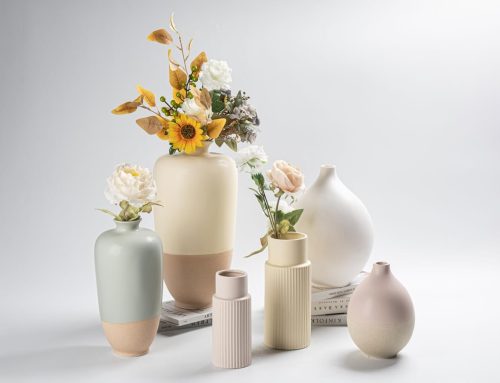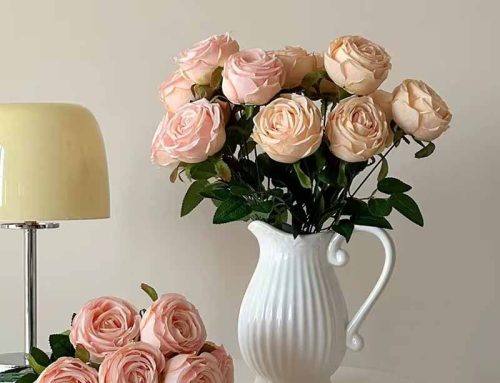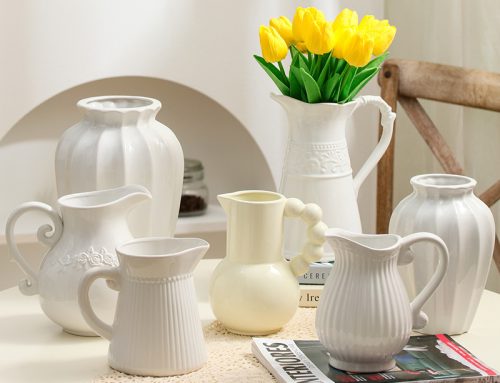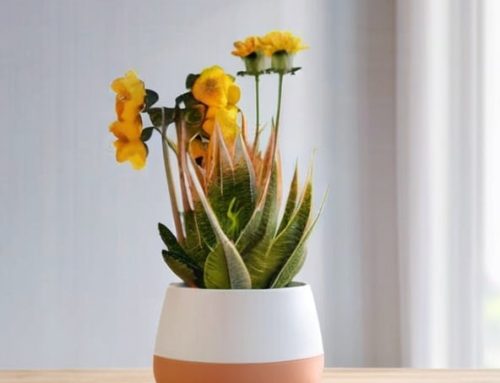Gardening is one of the most rewarding hobbies—there’s nothing better than seeing the fruits of your labor and enjoying a garden you can be proud of. To make the most of your garden, preparation and correct planting techniques are key. Just as important, choosing the right plant pot—especially a ceramic one—can make a huge difference to both plant health and overall design.
This guide shares practical planting suggestions, explains how to measure plants and pots, and offers nine essential planting tips for beginners and experienced gardeners alike.

How Do We Measure Plants?
Plant sizes are usually shown as:
Grow pot diameter × Total plant height
-
The grow pot diameter is measured at the top rim of the pot.
-
The total height includes the grow pot, roots, and the visible plant.
👉 Example: A plant in a 15cm grow pot that measures 45cm in total height includes both the plant and its container.
Note: Plant heights are approximate and for guidance only. Hanging plants may be shown in hanging pots for display, but shipping containers may differ.
For soil-grown plants, the grow pot diameter is the best indicator of plant maturity: the larger the pot, the more developed the plant.
How Do We Size Hydroculture Plants?
Hydroculture plants are measured the same way, but the pots follow standardized sizing (diameter + height), allowing for water meters to fit properly.
Example: An 18/19 grow pot has an 18cm diameter and is 19cm tall.
Hydroculture roots adapt to grow in hydrogranules, creating compact, fleshy, and hardier root systems. This means hydroculture plants can be more mature even in smaller pots compared to soil-based plants.
How to Choose the Right Decorative Pot for Houseplants
Step 1: Check the grow pot diameter
-
Measure the plant’s grow pot.
-
Compare it to the opening of your chosen decorative pot.
-
Make sure the opening is wide enough to insert the grow pot.
💡 Tip: Choose a decorative pot with an opening about 1cm larger than the grow pot diameter.
-
For smaller pots (up to 14cm), go slightly smaller.
-
For larger pots (above 24cm), allow 2–3cm extra space.
📌 Caution: If the decorative pot tapers strongly at the base, it might not fit the grow pot properly. You can add a liner or a layer of pebbles, though this will slightly raise the plant.
Step 2: Check the grow pot height
-
Soil plants – Height is usually close to the pot diameter. Ensure the decorative pot is tall enough to cover it if not re-potting directly.
-
Hydroculture plants – Require a hydro kit with waterproof liners. The recommended pot size will always account for this.
👉 Make sure the decorative pot is at least 2–3cm taller than the grow pot for proper coverage.
Important Note on Pot Sizes
-
Opening measurement = Access hole for inserting the grow pot (not the external pot diameter).
-
External diameter & height = The pot’s overall size.
Since many decorative pots are handmade, slight variations in measurement are normal. Always check both opening size and external dimensions when buying.

Factory Insights: Sizing & Wholesale Trends
As a ceramic pots factory and supplier, we not only produce standard sizes but also follow export market trends. Here’s what’s currently popular:
-
Europe – Medium-sized ceramic pots (14–18cm) in neutral colours like beige, grey, and white.
-
USA – Larger planters (20–25cm) with glossy finishes, suitable for indoor ornamental grasses.
-
Asia – Compact ceramic pots (8–12cm), often sold in sets for small succulents and bonsai.
👉 Wholesale buyers often request customised ceramic planters with brand logos or seasonal designs. Our MOQ is flexible, starting from 500 pieces, and we support small trial orders.
Nine Practical Tips for Planting
-
Choose a pot with drainage – Traditional plant pots have drainage holes and saucers. For modern pots without drainage, use liners or hydrogranules.
-
Check soil depth – Roots need enough room to spread without sitting in excess water.
-
Pre-soak garden plants – Soak hardy plants in water before planting.
-
Create a soil ring – Form a shallow basin around plants to reduce runoff when watering.
-
Water thoroughly after planting – Keep soil moist, especially during dry weather. Mist young plants regularly.
-
Mulch new plants – Helps retain moisture, reduce weeds, and regulate soil temperature.
-
Mind climbing plants – Plant them at least 30cm away from walls or fences to prevent drying out.
-
Check plant vitality – Scrape bark gently to see if the layer beneath is green and moist.
-
Enrich the soil – Use compost, manure, or fertilizers like bone meal to encourage healthy root development.
Final Thoughts
Choosing the right ceramic pot is not just about aesthetics—it directly affects plant health and customer satisfaction. From sizing correctly to understanding which indoor plants pair best with different pot styles, every detail matters in creating value for end users.
As a ceramic pots factory, Homey Ceramic combines design, functionality, and wholesale flexibility. Our plant pots are crafted with durability, breathability, and style in mind—qualities that make ceramic planters the preferred choice for living room plants and indoor decoration.
For wholesalers and distributors, we provide more than just products—we offer wholesale ceramic plant pot solutions tailored to your market trends and plant types. Whether it’s an 18cm glazed pot for snake plants or minimalist matte white pots for European markets, our factory production expertise ensures consistency and quality.
📌 Explore our full range of plant pots supplies and discover how the right pots can grow your business.





I believe everything published was actually very reasonable.
But, what about this? what if you added a little content?
I mean, I don’t want to tell you how to run your
website, however what if you added a headline that makes people desire more?
I mean Tips and Suggestion for Planting – Homey Ceramic is a little plain.
You might look at Yahoo’s home page and watch
how they create news headlines to get people to click. You might add a related video or a related pic or two to get readers interested about everything’ve got to say.
In my opinion, it could bring your posts a little livelier.
Most online casinos fail to assure fast payouts when compared to mBit’s instant withdrawals.
Also visit my blog post: Rochell
Close to the Kangwon Land Casino is the hugely elevated,
72-par 18-hole Higher Resort CC Golf Course.
Here is my homepage … mogan.isblog.net